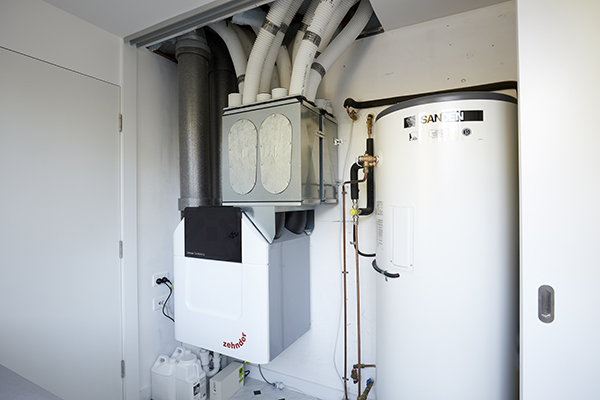Proven Strategies to Maintain Your HRV System
Wiki Article
Checking out the Advantages of Heat Recovery Ventilation for Power Effectiveness in Homes
Heat Recovery Ventilation (HRV) systems offer homeowners a functional technique to improving power performance. By reclaiming warmth from outbound air, these systems can significantly lower cooling and heating costs. Additionally, they supply a constant supply of fresh air, boosting interior air high quality and comfort degrees. As house owners consider lasting options, recognizing the nuances of HRV systems comes to be increasingly essential. What factors should one review prior to making such an investment?Comprehending Heat Recovery Ventilation Solutions

Just How HRV Boosts Indoor Air High Quality

Energy Cost Savings: The Economic Advantages of HRV
Making best use of power efficiency, heat recovery ventilation (HRV) systems use significant financial benefits for homeowners. By recouping and reusing warmth from exhaust air, HRVs significantly lower cooling and heating costs. This modern technology can lead to power cost savings of up to 30%, depending upon climate and usage patterns. Home owners typically observe lowered energy bills soon after setup, making HRVs an economically wise investment in time. In addition, numerous regions provide rewards or rebates for energy-efficient upgrades, better boosting the financial charm. As energy costs remain to increase, the cost-effectiveness of HRVs comes to be increasingly clear. In general, the unification of HRV systems not only promotes energy efficiency but also adds to long-lasting economic cost savings for homes.The Environmental Influence of Heat Recovery Ventilation
A substantial environmental advantage of heat recovery ventilation (HRV) systems exists in their capacity to decrease general energy intake. By reclaiming warm from exhaust air and transferring it to inbound fresh air, HRV systems minimize the requirement for energy-intensive home heating and cooling techniques. This reduction in power demand HRV Heat Recovery Ventilation contributes to reduce greenhouse gas emissions, as less fossil gas is called for to preserve comfy indoor temperatures. Furthermore, HRV systems boost indoor air high quality by efficiently trading stagnant air with fresh exterior air, reducing reliance on mechanical cooling systems that can harm the environment. In general, the application of HRV systems supports lasting living techniques and straightens with global efforts to battle environment change by promoting energy performance in household setups.
Selecting the Right HRV System for Your Home
How can property owners guarantee they select the right heat recovery ventilation (HRV) system for their demands? Initially, they must evaluate their home's size and format, as these aspects affect air movement demands. Next, evaluating the system's effectiveness rankings is vital, as higher rankings suggest better performance and power savings. Homeowners must likewise think about installation and maintenance expenses, comparing different brand names and models for worth. Furthermore, it is necessary to review noise levels, as some systems operate even more silently than others. Consulting with heating and cooling professionals can offer tailored recommendations based on specific home problems. Lastly, checking out customer testimonials and guarantees can help in making an educated choice, making certain that the picked HRV system properly boosts indoor air quality and energy performance.Regularly Asked Questions

How Typically Should I Clean or Maintain My HRV System?
The frequency of cleansing or preserving a warm recuperation air flow (HRV) system typically relies on use and environmental variables. Normally, it is recommended to perform maintenance every six months to ensure peak efficiency and air quality.
Can HRV Solutions Help In Reducing Humidity Degrees Inside Your Home?
HRV systems can properly minimize interior humidity degrees by exchanging stale, damp air with fresh, drier air from outside. HRV Heat Recovery Ventilation. This procedure aids maintain a balanced indoor atmosphere, boosting convenience and avoiding moisture-related problems
What Is the Lifespan of a Typical HRV System?
The life expectancy of a normal heat recovery ventilation (HRV) system varies, generally lasting in between 10 to 15 years. Normal upkeep can extend its performance and operational life, making sure peak performance throughout its use period.Are There Any Type Of Sound Worries With HRV Systems?
Noise problems with HRV systems can develop, specifically from follower operation. Nonetheless, numerous contemporary units are designed to decrease audio levels, guaranteeing they run silently while keeping effectiveness, which attends to possible disruptions in living environments.Can I Set Up an HRV System Myself, or Do I Need a Professional?
The private contemplated whether to mount the heat recovery ventilation (HRV) system personally or work with a specialist. Normally, while DIY installment is possible, proficiency assurances appropriate functionality and compliance with local building ordinance, boosting system efficiency.Report this wiki page